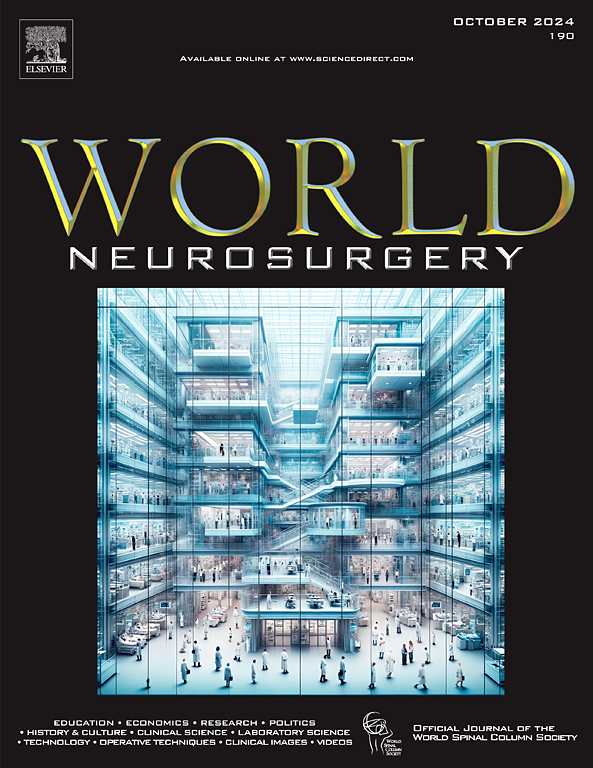Patient and Public Perceptions of Simulation Training in Neurosurgery: A Two-Stage Cross-Sectional Survey
IF 1.9
4区 医学
Q3 CLINICAL NEUROLOGY
引用次数: 0
Abstract
Background
The use of simulation in neurosurgery is a widespread and popular means of training worldwide. However, little is known about patient and public acceptability of simulation in neurosurgical training and the potential consequences of this for future simulation development.
Methods
A two-stage questionnaire strategy was utilized, the first gathering insights from neurosurgical inpatients, and the second from the general public. These questionnaires assessed general understanding of the concept of simulation in neurosurgery, the relative importance of factors affecting simulation training, and acceptability of different simulation modalities and means of providing feedback to trainees.
Results
Seventeen inpatients responded to the first-stage survey, and 192 members of the public responded to the second-stage survey. Familiarity with the concept of simulation training in neurosurgery was generally lacking. Fidelity was established as the most important element of simulation training by the public, with cadavers and physical models the most acceptable form of simulation training. Augmented reality solutions were least popular among the public. There was enthusiasm for both artificial intelligence and telementoring as training feedback solutions.
Conclusions
Patients and the public are accepting of the use of simulation training in neurosurgery. Future development should focus on improving access to high-fidelity simulation and exploring the use of artificial intelligence and telementoring in providing trainee feedback.

求助全文
约1分钟内获得全文
求助全文
来源期刊

World neurosurgery
CLINICAL NEUROLOGY-SURGERY
CiteScore
3.90
自引率
15.00%
发文量
1765
审稿时长
47 days
期刊介绍:
World Neurosurgery has an open access mirror journal World Neurosurgery: X, sharing the same aims and scope, editorial team, submission system and rigorous peer review.
The journal''s mission is to:
-To provide a first-class international forum and a 2-way conduit for dialogue that is relevant to neurosurgeons and providers who care for neurosurgery patients. The categories of the exchanged information include clinical and basic science, as well as global information that provide social, political, educational, economic, cultural or societal insights and knowledge that are of significance and relevance to worldwide neurosurgery patient care.
-To act as a primary intellectual catalyst for the stimulation of creativity, the creation of new knowledge, and the enhancement of quality neurosurgical care worldwide.
-To provide a forum for communication that enriches the lives of all neurosurgeons and their colleagues; and, in so doing, enriches the lives of their patients.
Topics to be addressed in World Neurosurgery include: EDUCATION, ECONOMICS, RESEARCH, POLITICS, HISTORY, CULTURE, CLINICAL SCIENCE, LABORATORY SCIENCE, TECHNOLOGY, OPERATIVE TECHNIQUES, CLINICAL IMAGES, VIDEOS
 求助内容:
求助内容: 应助结果提醒方式:
应助结果提醒方式:


